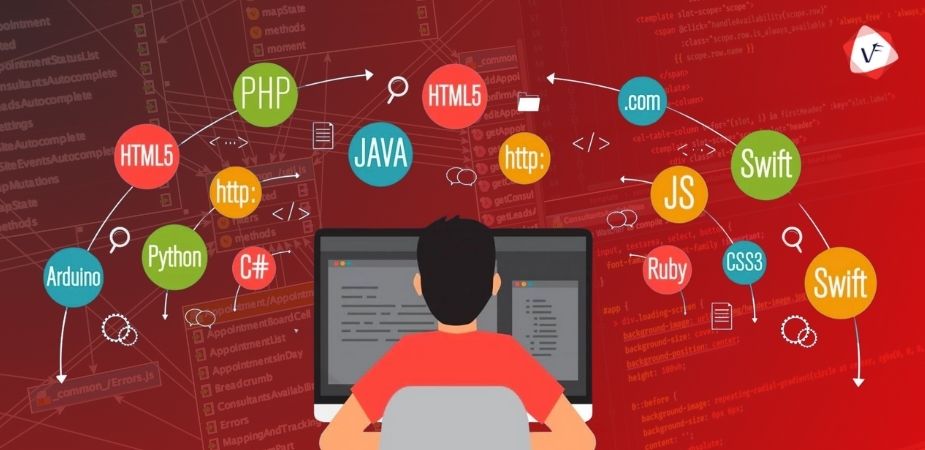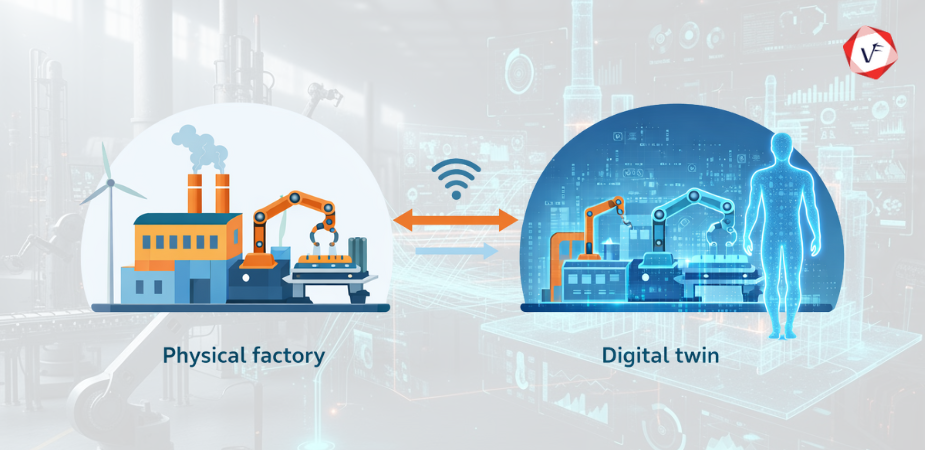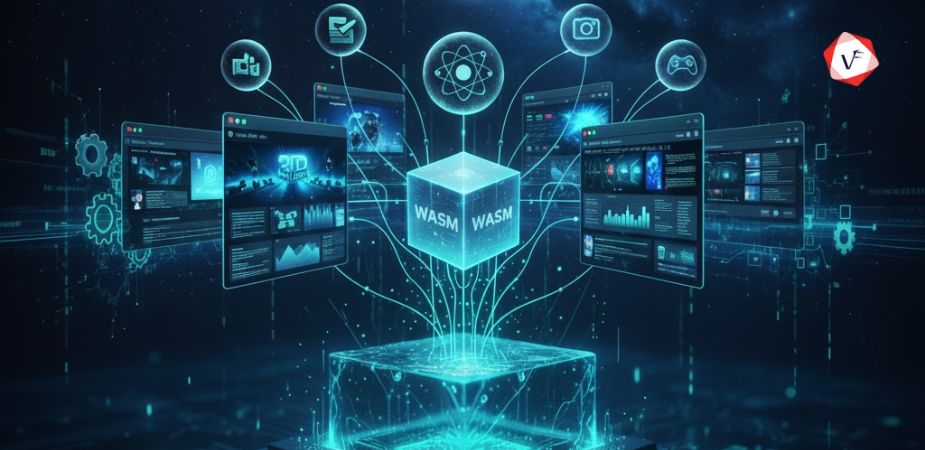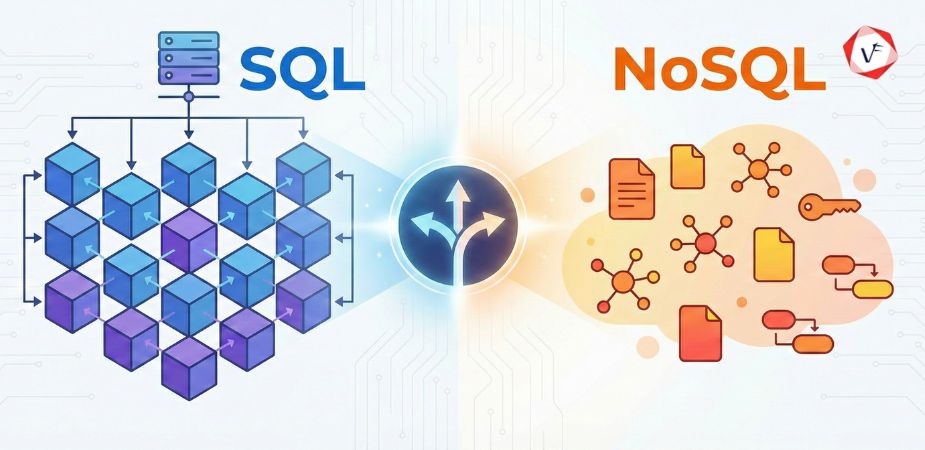- September 08, 2025 6:37 pm
- by Sooraj
- September 08, 2025 6:37 pm
- by Sooraj

A tech stack (technology stack) is a combination of programming languages, frameworks, tools, and services used to build and run software applications. Think of it as a developer's complete toolkit for creating websites, mobile apps, and web applications.
Understanding tech stacks is essential for anyone involved in software development, whether you're a business owner planning a digital product, a developer starting a new project, or someone curious about how modern applications are built.
Every modern tech stack consists of two essential parts:
Frontend (Client-side)
This is what users see and interact with when they use your application. It includes the user interface (UI) and user experience (UX) elements. Common frontend technologies include HTML, CSS, JavaScript, and popular frameworks like React, Angular, and Vue.js.
Backend (Server-side)
This runs behind the scenes and handles all the logic that users don't see. It manages data processing, storage, security, and business logic. Backend technologies include programming languages like Python, Java, and Node.js, along with databases and servers.
| Technology | Purpose | Use Case |
|---|---|---|
| HTML | Structure web content | Creating page layouts |
| CSS | Style and design | Colors, fonts, responsive design |
| JavaScript | Add interactivity | Dynamic content, user interactions |
| React | Component-based UI | Modern web applications |
| Angular | Full-featured framework | Enterprise applications |
| Vue.js | Progressive framework | Flexible, beginner-friendly apps |
| Technology | Language | Best For |
|---|---|---|
| Node.js | JavaScript | Real-time applications |
| Django | Python | Rapid development, security |
| Spring Boot | Java | Enterprise applications |
| Laravel | PHP | Web applications, APIs |
| Ruby on Rails | Ruby | Startups, MVPs |
SQL Databases (Relational)
These databases organize data in structured tables with relationships between them:
NoSQL Databases (Non-relational)
These databases offer more flexibility for unstructured data:
Best for: Full-stack JavaScript development, real-time applications, teams that want to use JavaScript throughout the entire development process.
Best for: Modern web applications, startups, rapid prototyping, and projects requiring dynamic user interfaces.
Best for: Traditional web development, content management systems like WordPress, and established web applications.
Best for: Data-driven applications, machine learning integration, rapid development, and applications requiring robust security features.
Best for: Static websites, blogs, e-commerce sites, and applications requiring high performance and security.
1. Project Requirements
Consider what type of application you're building. Is it a simple website, a complex web application, or a mobile app? Different project types require different technological approaches.
2. Team Expertise
Choose technologies that align with your team's current skills. Learning new technologies takes time and can delay your project timeline.
3. Budget Considerations
Some technologies are open-source and free, while others require licensing fees. Consider both development and long-term maintenance costs.
4. Scalability Needs
Think about your expected growth. Will your application need to handle thousands or millions of users? Plan for scalability from the beginning.
5. Community Support
Technologies with active communities offer better support, more tutorials, and regular updates.
| Factor | MEAN/MERN | LAMP | Django | .NET |
|---|---|---|---|---|
| Learning Curve | Medium | Easy | Easy | Medium |
| Development Speed | Fast | Fast | Very Fast | Medium |
| Scalability | High | Medium | High | Very High |
| Cost | Low | Low | Low | Medium |
| Community | Large | Huge | Large | Large |
iOS Development
Native iOS apps offer the best performance and user experience but require specialized knowledge:
Android Development
Native Android development provides full access to device features:
React Native
Allows you to build mobile apps using JavaScript and React. One codebase works for both iOS and Android, making it cost-effective for many businesses. Used by companies like Facebook, Instagram, and Airbnb.
Flutter
Google's UI toolkit that uses the Dart programming language. Known for high-performance applications with beautiful, custom user interfaces. Growing rapidly in popularity.
Xamarin
Microsoft's cross-platform solution using C#. Popular in enterprise environments due to strong integration with Microsoft services.
1. Amazon Web Services (AWS)
The most comprehensive cloud platform with services for every need. Offers global infrastructure, pay-as-you-scale pricing, and extensive documentation.
2. Google Cloud Platform (GCP)
Strong in AI/ML capabilities and offers competitive pricing. Excellent choice for startups and companies focusing on data analytics.
3. Microsoft Azure
Enterprise-friendly with excellent Windows integration and hybrid cloud solutions. Popular choice for businesses already using Microsoft products.
4. Vercel/Netlify
Perfect for JAMstack applications with easy deployment and developer-friendly features. Great for static sites and frontend applications.
Choosing the right tech stack is crucial for project success and long-term sustainability. The best approach is to consider your team's skills, project requirements, budget constraints, and long-term goals rather than simply following the latest trends.
Start with proven, well-supported technologies that align with your team's expertise. Focus on building a solid foundation with technologies that have strong communities, comprehensive documentation, and a track record of success in production environments.
Remember that the technology landscape evolves rapidly, but focusing on fundamentals and choosing stable, well-supported technologies will serve you well in 2025 and beyond. The most important factor is not which specific technologies you choose, but how well they work together to help you build and maintain your application effectively.
Whether you're building a simple website, a complex web application, or a mobile app, the principles of good tech stack selection remain the same: prioritize your project needs, consider your team's capabilities, and plan for the future.
Guaranteed Response within One Business Day!

What is Digital Twin Technology?

What are WebAssembly (WASM) Applications?
Code Review Best Practices: Complete Guide for 2026

Database Selection Guide: SQL vs NoSQL
AI Agents in Enterprise Software: How Autonomous AI is Transforming Business Operations